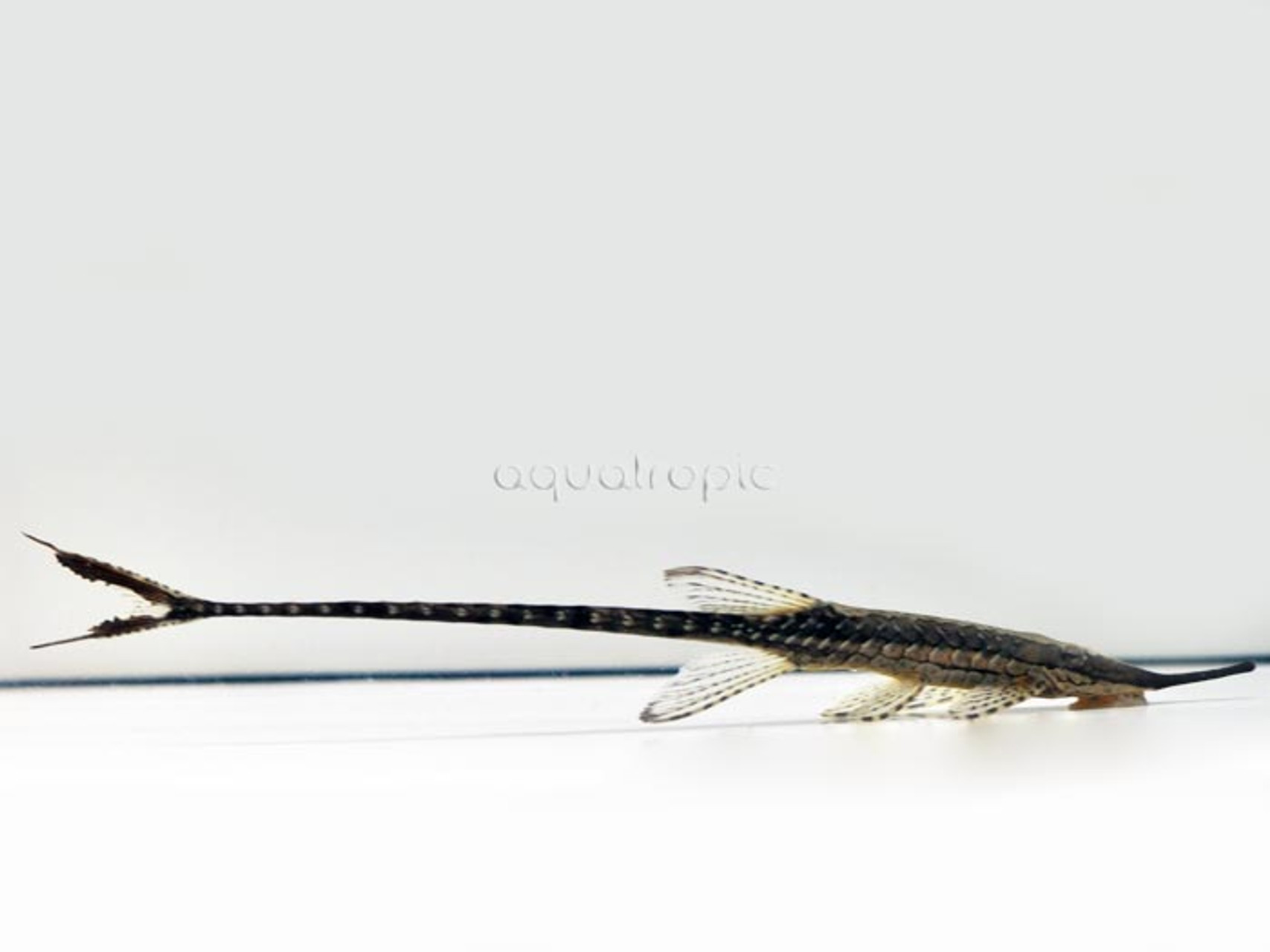The Farlowella Twig Catfish

For fans of cryptic, camouflaged fishes, there’s a lot to like about the Twig Catfishes of the genus Farlowella. These masters of mimicry have transformed their bodies so as to perfectly appear like a small, broken twig, and, whether it’s in their natural habitat of slow-moving stream banks or in an aquarium decorated with driftwood and live plants, they are remarkably adept at disappearing into their surroundings, blending in with the background as they go about their innocuous lives.
Farlowella belongs to the diverse family of armored catfishes known as the Loricariidae. This diverse group of primarily South American fishes are well-known to aquarists for the many algae-eating species commonly available, such as the Common Pleco and the Bristlenose Pleco. Twig Catfishes also make a living rasping algae off of rocks and wood, but, in an aquarium setting, they are nowhere near as prolific at this task as their bulkier relatives. If you purchase a Farlowella hoping to see them eliminate all the algae in your aquarium, prepare to be disappointed.
In fact, one of the challenges of keeping this fish is ensuring that it has enough food to eat. If placed into a clean aquarium, particularly smaller tanks that already house other algae eaters, it’s not uncommon for Farlowella to get outcompeted for food and slowly starve. The best way to avoid this is to regularly offer sinking algae wafers and fresh greens (zucchini, spinach, lettuce). Decorating with larger rocks and driftwood is also an excellent way to provide natural grazing opportunities and will help your Twig Catfish feel at home.
Most specimens seen in the aquarium trade are captive bred and belong to the species F. vittata, though it’s not uncommon to see these mistaken for a very similar species, F. acus, which is actually rarely seen and considered to be quite uncommon in the wild. F. vittata can be found in the vast Orinoco river basin of Colombia and Venezuela, where it is typically found along the submerged roots and dead leaves along the riverbanks.
For those looking to breed their Farlowella, the sexes can be readily identified due to the broader snout of males, which is covered in short protuberances called “odontodes”. There is generally little aggression or territoriality shown in this species, so a large group can be kept if adequately fed, and, given some time, they will eventually lay eggs and bring forth into the world more little twigs.